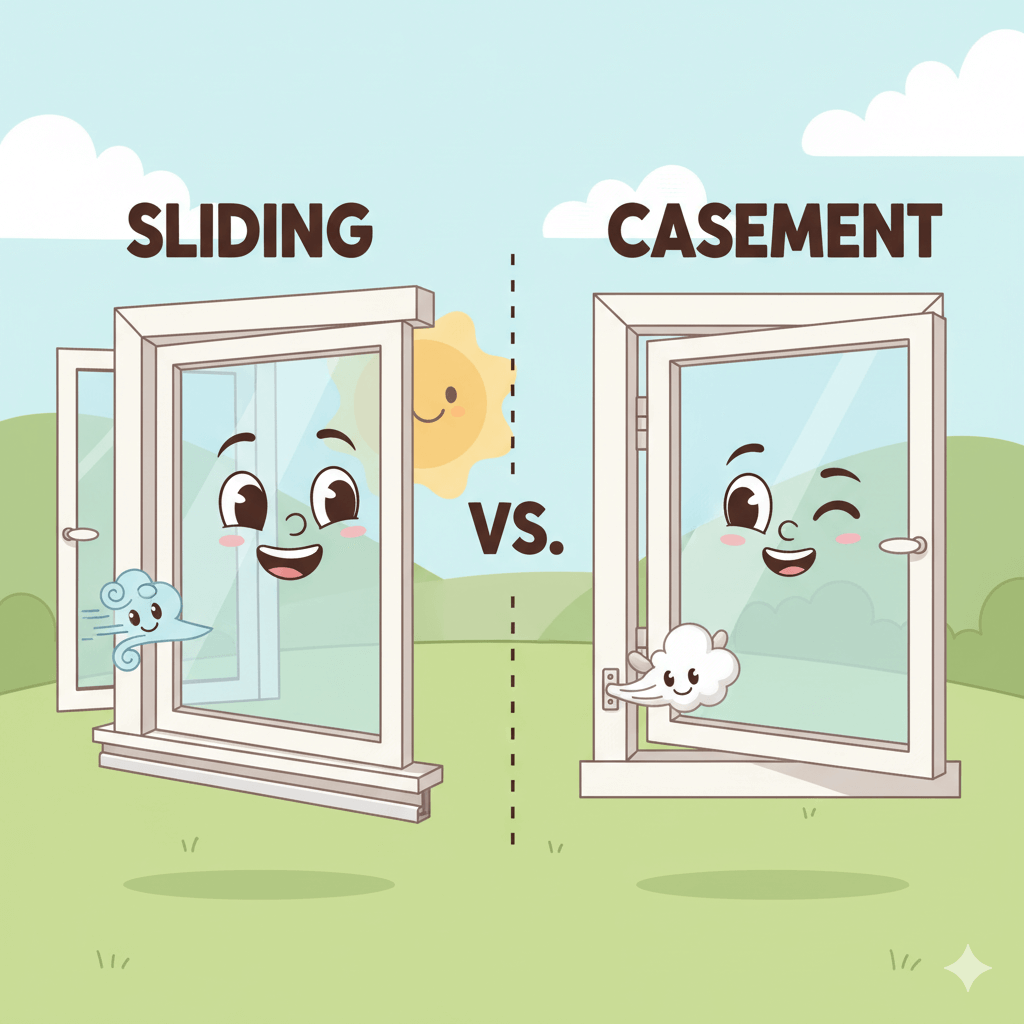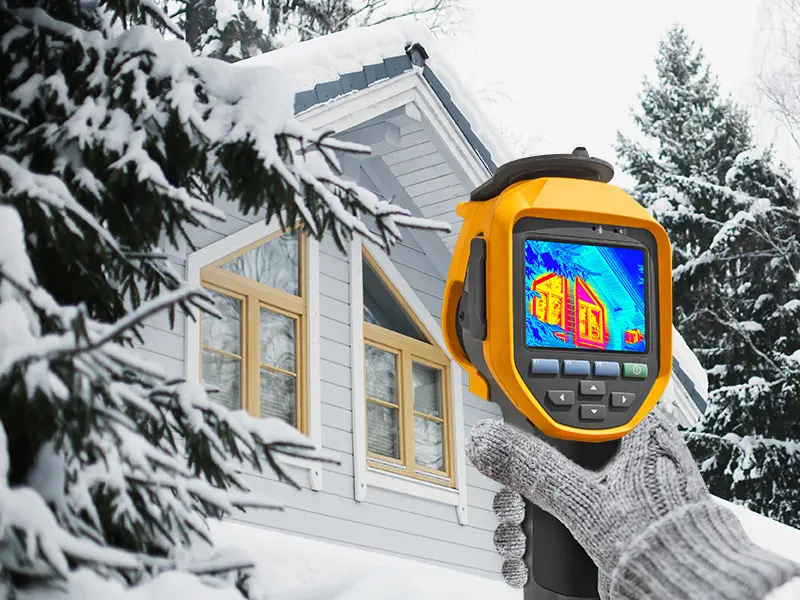Windows for the Mediterranean coast
· María Fernández · General knowledge · 5 min read
The Mediterranean coast creates unique conditions for windows. High humidity, salty air, and intense sunlight require the proper selection of materials and configuration.
Coastal Climatic Features
Salty air accelerates the corrosion of metal components. Conventional hardware fails in 2-3 years instead of the standard 10-15 years. Aluminum profiles without a protective coating lose their appearance, and steel hinges rust.
Humidity of 65-75% year-round leads to condensation on windows in winter. This creates conditions for mold growth on slopes and damages window sill finishes.
Solar radiation heats rooms through windows to uncomfortable temperatures. On south-facing windows, glass can reach 55°C, turning rooms into greenhouses from May to October. Without the right windows, air conditioning costs can reach 300-400 euros per month.
Wind loads on the coast exceed standards for inland regions. The Levant in Alicante or the Tramontana in Catalonia create pressures of up to 1200 Pa—windows must be able to withstand these loads without deforming.
Choosing a Profile Material
PVC windows are well suited for coastal areas. The plastic doesn’t rust in salty air and requires no maintenance other than washing. Modern profiles with UV stabilizers don’t fade even after 15-20 years in the sun.
For coastal areas, choose white or light-colored profiles—they generate less heat. Dark colors can deform due to overheating on the south side at temperatures above 40°C.
A disadvantage of PVC is that with large sash sizes, the profile can sag under its own weight. For panoramic windows, it’s better to consider other options.
Aluminum windows are ideal for large glazed surfaces. The strength of the material allows sashes up to 3 meters high without the risk of deformation.
Be sure to choose profiles with anodized or powder coating—they are protected from corrosion in maritime climates. Regular, uncoated aluminum will dull and develop a film within 1-2 years.
For residential buildings, systems with a thermal break are required. Plain, uninsulated aluminum creates thermal bridges in winter and overheats in summer.
Wooden windows on the coast require maximum maintenance. High humidity and salty air destroy the protective coating faster than in other regions. Repainting will require repainting every 3-4 years instead of the standard 7-8 years.
If choosing wood, choose hardwoods with multi-layer protection, such as oak or meranti, specially treated for maritime climates.
Double-glazed windows for the coast
Solar control glass is a must for south and west-facing windows. The low-e coating reflects up to 60% of solar heat, reducing indoor temperatures by 5-7 degrees without air conditioning.
Choose glass with a solar transmittance factor (Solar Factor) of no higher than 0.4 for maximum heat protection. Standard double-glazed windows transmit too much heat.
Double-glazed windows are only necessary for homes with permanent occupancy and winter heating. For second homes used in the summer, single-glazed windows with solar control coating are sufficient.
Laminated glass is useful on lower floors to protect against burglary and on the upper floors of high-rise buildings to protect against wind loads.
Hardware for a Marine Climate
Standard hardware quickly fails in coastal conditions. Choose stainless steel components with an anti-corrosion coating.
Hinges and locking mechanisms must have a minimum protection class of C4 according to EN 1670—this guarantees operation in aggressive environments. The cost of such hardware is 30-40% higher than standard hardware, but its service life is 3-4 times longer.
Handles and decorative elements made of stainless steel or with a PVD coating maintain their appearance. Regular chrome tarnishes within a year, while brass develops a patina.
Lubricate the mechanisms regularly—salt and moisture accelerate wear on moving parts, even on high-quality hardware. This should be done every six months.
Sealing and Installation
On the coast, quality installation is more important than in other regions. Wind finds even the smallest cracks, creating drafts and whistling sounds.
Installation joints should be protected with vapor-permeable tape on the outside and a vapor barrier on the inside. This prevents moisture from penetrating the foam sealant, which deteriorates from moisture within 2-3 years.
Silicone sealants should contain anti-mold fungicides and be UV-resistant. Regular silicone yellows and cracks in the sun within a year.
Sills and slopes require additional sealing. Wind-driven rain drives water into even small gaps, causing leaks and damaging the finish.
Ventilation Systems
On the coast, high humidity makes regular ventilation ineffective. Open windows let in moist air, which condenses inside.
Supply valves in windows ensure constant air exchange without drafts. Adjustable dampers allow you to control the amount of incoming air depending on the weather.
Micro-ventilation is a useful hardware feature that opens the sash by 3-5 mm. This is sufficient for air circulation without temperature loss or strong winds in the room.
Window Care on the Coast
A maritime climate requires more frequent window maintenance.
Wash the glass and frames once a month with fresh water. Salt and dust form a film that penetrates the surface and spoils the appearance. Regular cleaning products are sufficient.
Check the condition of the seals every 6 months. Rubber dries out in the sun faster than in other regions. Cracked seals allow moisture to pass through and create drafts.
Lubricate the hardware with special compounds twice a year. This prolongs the life of the mechanisms and prevents jamming from salt.
Inspect the mounting joints from the outside once a year. If cracks appear in the sealant, replace it immediately—moisture destroys the foam and creates thermal bridges.
Cost of Windows for Coastal Climates
Windows for coastal climates cost 20-30% more than standard windows due to reinforced hardware and protective coatings.
PVC windows with solar control glass and marine hardware start at €350 per square meter including installation.
Aluminum systems with thermal breaks and anodized coating start at €500 per square meter.
Wooden windows with enhanced protection for coastal climates start at €700 per square meter.
Saving on window quality means replacement in 5-7 years instead of 20-25 years. Properly selected windows pay for themselves through reduced air conditioning costs and the elimination of repairs.




